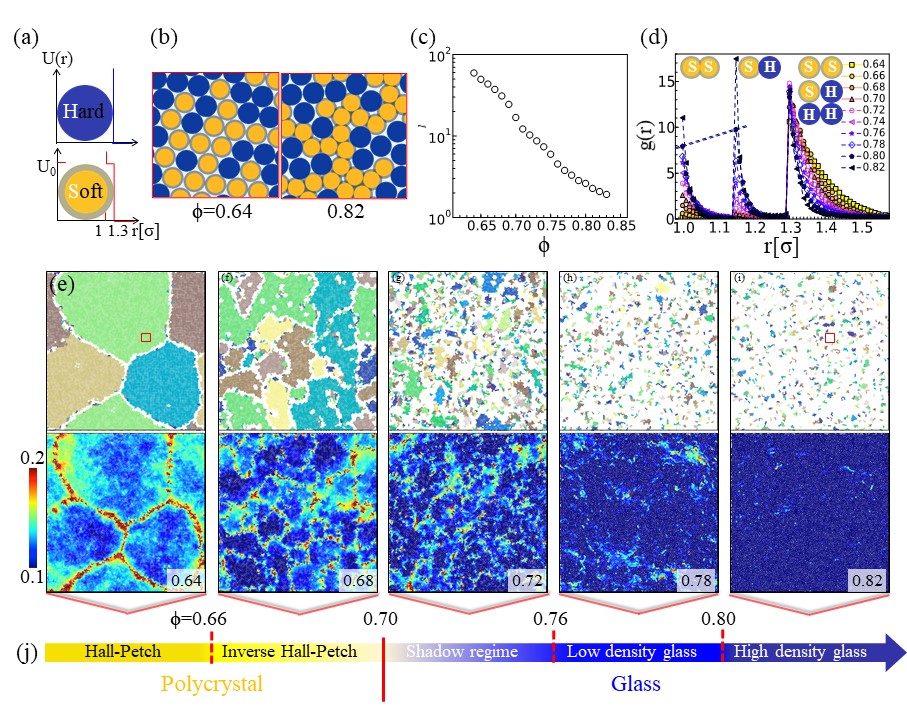A polycrystal will transform into a glass when its grain size is sufficiently reduced. However, it is not clear how the polycrystal-glass boundary can be identified, whether the boundary is a sharp point or a crossover regime, and what features exist at this boundary. These questions have rarely been explored, partly because ultrafine-grained polycrystals are unstable. Here we compress binary single crystals composed of hard and soft disks into polycrystals and further into glasses by simulation. Through this approach, we can continuously increase the fraction of mismatched particles and produce tiny grains not accessible before. Such full spectrum of grain size enables us to study the polycrystal-glass transition. We observe rich structural, mechanical, dynamical, and thermodynamic features at the sharp polycrystal-glass boundary. These features could serve as criteria for the polycrystal-glass transition. Our analyses reveal the Hall-Petch and inverse Hall-Petch behaviors in two-dimensional polycrystals and identify three glass regimes. We find that compressing binary crystals can produce stable ultrafine grains only when compressible parts abound and appropriate two length scales exist in the soft-particle interactions. Our approach can guide the fabrication and stabilization of ultrafine-grained polycrystals. The observations cast light on the crossover regime of polycrystals and glasses.

原文链接:https://journals.aps.org/prx/pdf/10.1103/PhysRevX.8.041023